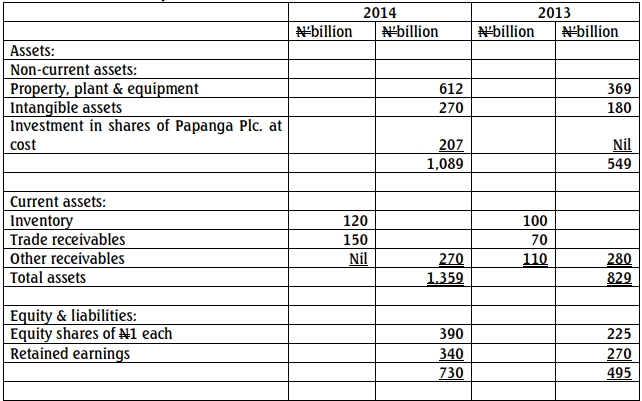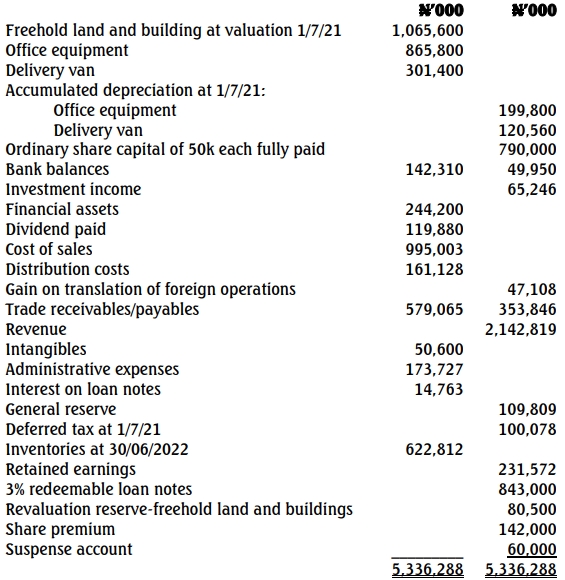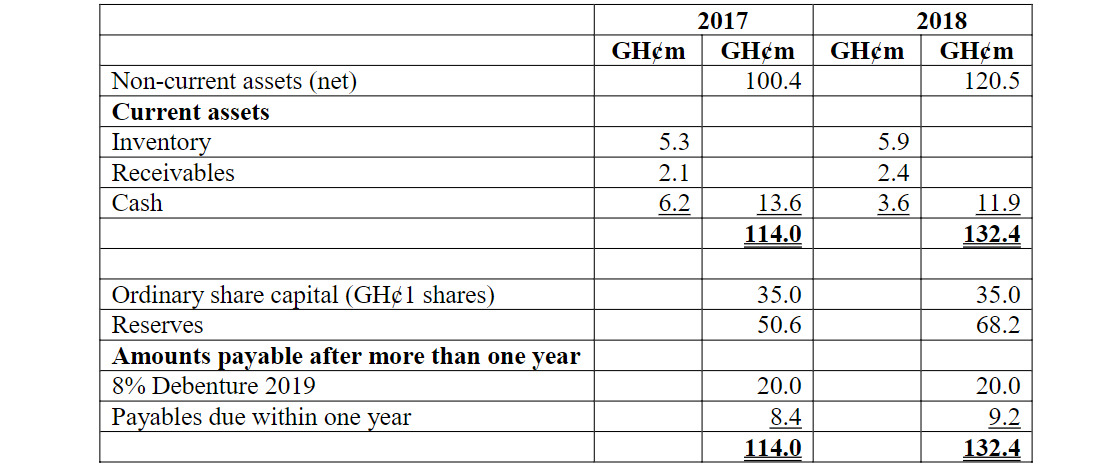- 20 Marks
FR – May 2015 – L2 – SB – Q3 – Statement of Cash Flows (IAS 7)
Calculate and analyze financial ratios and prepare cash flows from operating activities for Galadanci Plc.
Question
(a) Galadanci Plc, a telecommunications company, has the following financial statements for the years ending 31 December 2013 and 2014. Using the statements below, calculate specific ratios and analyze Galadanci Plc’s performance:
Statements of Profit or Loss and Other Comprehensive Income for the year ended
| 2014 (N’billion) | 2013 (N’billion) | |
|---|---|---|
| Revenue | 2,430 | 1,638 |
| Cost of Sales | (1,701) | (983) |
| Gross Profit | 729 | 655 |
| Administrative Costs | (311) | (180) |
| Distribution Costs | (207) | (117) |
| Finance Costs | (36) | (6) |
| Profit before Taxation | 175 | 352 |
| Income Tax Expense | (54) | (102) |
| Profit for the Year | 121 | 250 |
Statements of Financial Position as at 31 December


Additional Information for 2014
- Galadanci Plc acquired 60% of Papanga Plc’s shares to diversify into agriculture.
- The company increased its mobile subscriber base, raising the average revenue per user.
- No dividends were received from Papanga Plc, and the share value remained constant.
Required:
- Calculate the following ratios for the year ended 31 December 2014, analyze Galadanci Plc’s performance, and comment on qualitative factors impacting the company:
- Gross Profit Percentage
- Return on Capital Employed (where capital employed = Total Assets – Current Liabilities)
- Net Profit (PBIT) Percentage
- Asset Turnover
- Gearing Ratio
- Debt/Equity Ratio (16 Marks)
- Prepare Galadanci Plc’s Cash Flows from Operating Activities using the indirect method according to IAS 7. (4 Marks)
Find Related Questions by Tags, levels, etc.





